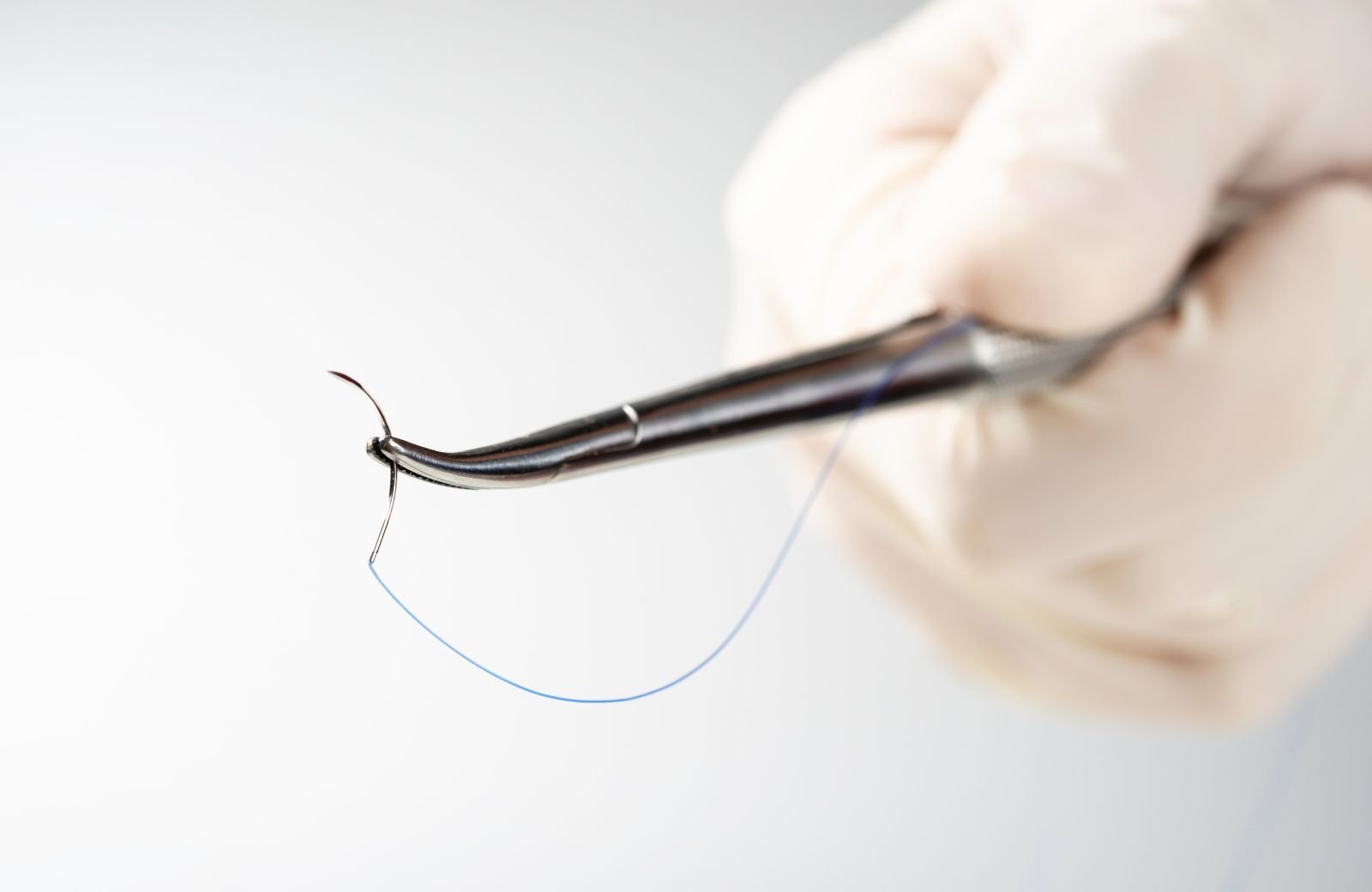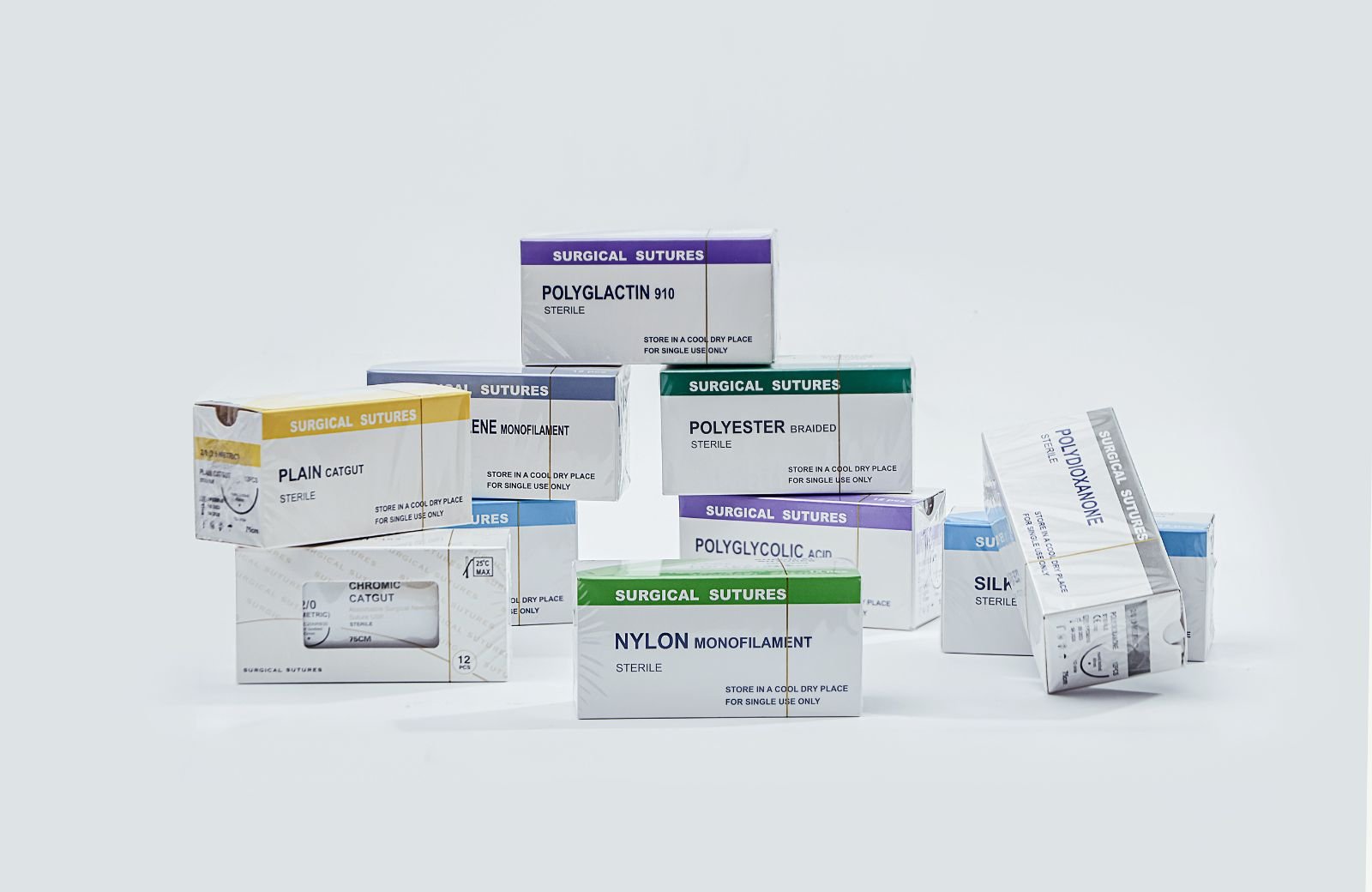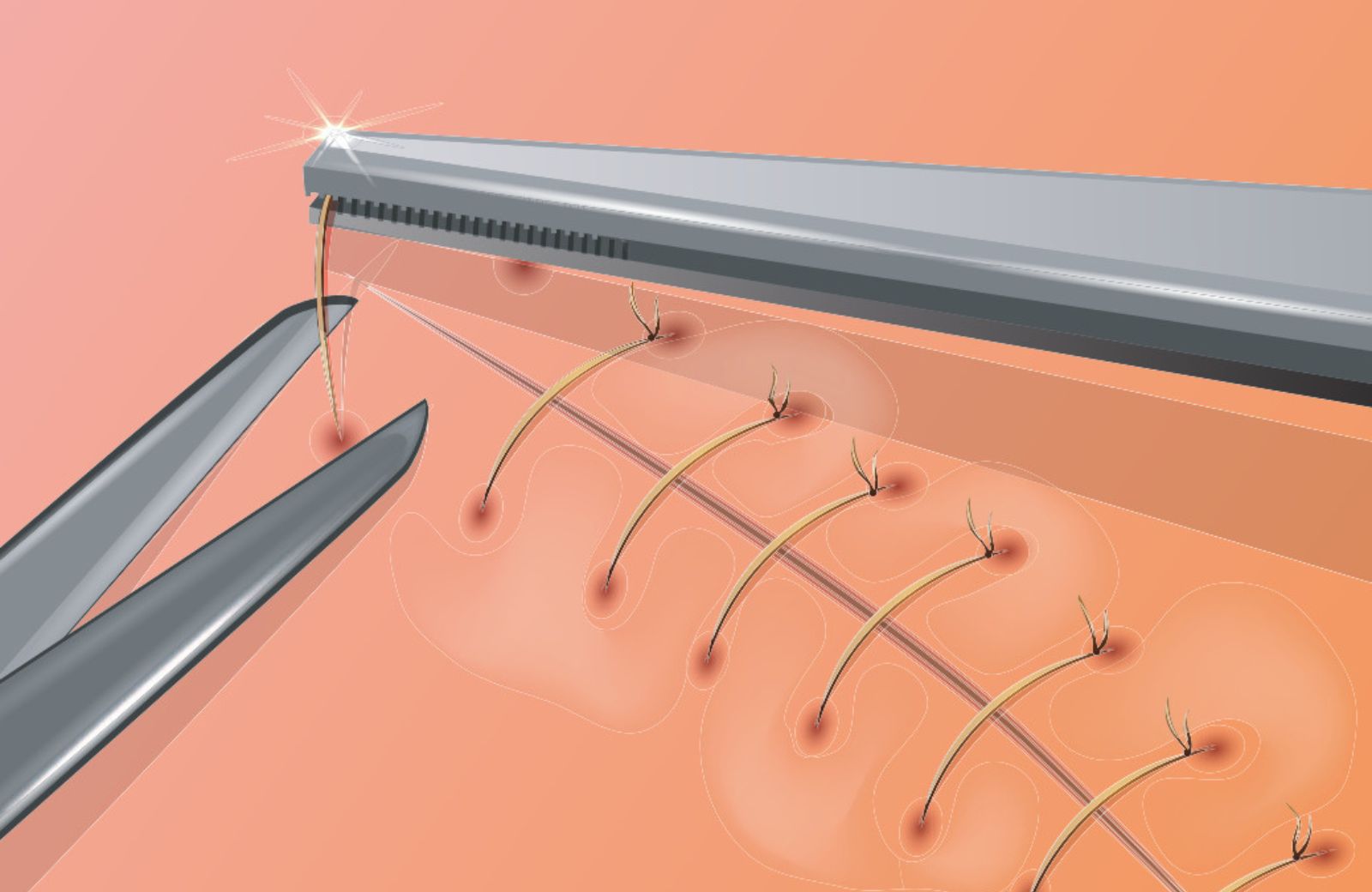 What is a Suture? A Comprehensive Definition in Medical Practice
What is a Suture? A Comprehensive Definition in Medical Practice
Sutures are a fundamental component of medical practice, particularly in surgical procedures. They play a crucial role in wound closure and healing by providing a means to stitch tissues together. Understanding the definition of a suture in the medical field is essential for both healthcare professionals and patients alike.
The Definition of a Suture
In medical terms, a suture is defined as a method of closing a wound or incision by joining the edges of the tissue together with a material that can be absorbed by the body or needs to be removed after healing. This definition encompasses both the physical act of suturing and the materials used in the process.
Materials Used for Sutures
Sutures can be made from a variety of materials, which can be categorized into two main types: absorbable and non-absorbable sutures.
- Absorbable Sutures: These sutures are designed to dissolve over time, typically through natural biological processes. They are often used for internal stitches where removal is impractical.
- Non-Absorbable Sutures: These sutures do not dissolve and must be removed manually after a certain period. They are often used in external wounds or when longer support is required.
The Suturing Process
The process of suturing is a skill that requires a deep understanding of both the physical and anatomical aspects of the tissues involved. Key steps in the suturing process include:
- Preparation: The area around the wound is cleaned and disinfected to prevent infection.
- Choice of Suture Material: The surgeon selects the appropriate type and size of suture based on the location and type of the wound.
- Technique: Various suturing techniques can be used, such as interrupted, continuous, or mattress sutures, depending on the nature of the incision.
- Closure and Aftercare: Once the wound is sutured, aftercare instructions are provided to ensure proper healing and to monitor for signs of infection.
Importance of Sutures in Wound Healing
Understanding the role of sutures in wound healing is crucial for several reasons:
- Promote Healing: Sutures bring tissue edges together, allowing for optimal healing and reducing the chance of infection.
- Minimize Scarring: Proper suturing techniques can help minimize scarring and improve cosmetic outcomes.
- Support Tissue Integrity: Sutures provide the necessary support to the wound during the healing process, particularly in areas subject to movement.
In conclusion, sutures are an essential aspect of medical practice, serving not only as a means to close wounds but also playing a critical role in the healing process. Understanding what a suture is, the materials used, the process involved, and its importance in wound healing is vital for both healthcare providers and patients. Whether in a surgical or emergency setting, the knowledge of suturing can greatly influence the outcome of patient care and recovery.
How Sutures Function: Understanding the Suture Definition in Medical Context
Sutures are an essential component in medical practice, particularly in the fields of surgery and wound care. Understanding how sutures function begins with a well-defined concept of what they are and their purpose in healing. In this section, we will explore the mechanics behind sutures and their critical role in facilitating proper wound closure and recovery.
The Role of Sutures in Wound Closure
At their core, sutures serve as a means of holding tissues together after an incision or injury. This is vital for several reasons:
- Support: Sutures provide structural support to the affected area, ensuring that the tissues remain in close proximity as they heal.
- Reducing Infection Risk: By keeping the wound edges together, sutures minimize the chances of contaminants entering the wound.
- Enhancing Healing: Effective suturing promotes faster and cleaner healing by facilitating the natural processes of tissue regeneration.
Wound Healing Process with Sutures
The process of wound healing can be divided into several phases, and sutures play a pivotal role in each of these stages:
- Hemostasis: Immediately after an injury, the body begins to stop the bleeding. Sutures help maintain pressure on the wound, which aids in this early stage.
- Inflammation: As the body responds to the injury, a localized inflammatory response occurs. Sutures keep the tissues aligned, allowing for optimal healing without disruption.
- Proliferation: During this phase, new tissue forms. Sutures keep the wound edges taut, enabling fibroblasts and new blood vessels to create healthy tissue.
- Remodeling: As healing progresses, sutures support the reorganization of collagen fibers, which strengthens the wound site over time.
Types of Sutures and Their Functionality
Sutures come in various types, each designed with specific properties tailored to different medical needs. Understanding these types and their functionalities can aid healthcare professionals in making informed decisions:
- Absorbable Sutures: These sutures dissolve over time, eliminating the need for removal. They’re ideal for internal organs where healing occurs below the surface.
- Non-absorbable Sutures: These sutures require removal after adequate healing. They are often used in skin closures where greater strength is necessary.
- Monofilament Sutures: Made from a single strand of material, these sutures pass through tissue smoothly and are resistant to infection.
- Multifilament Sutures: Composed of multiple strands, these sutures offer higher tensile strength but may harbor bacteria due to their braided structure.
Conclusion
In summary, sutures are not merely strands of material; they are vital tools in the medical field that fulfill crucial roles in wound closure and healing. By understanding the suture definition in a medical context, healthcare professionals can make better choices regarding wound management, ultimately enhancing patient outcomes. The proper application of sutures can significantly impact the healing process, making them indispensable in surgical practices and beyond.
 The Different Types of Sutures: Exploring the Suture Definition in Medical Settings
The Different Types of Sutures: Exploring the Suture Definition in Medical Settings
Sutures are a critical component of surgical procedures and medical practices, serving as the primary method for closing wounds and incisions. Understanding the different types of sutures is essential for healthcare professionals and patients alike, as each type has specific implications for healing, aesthetics, and the overall success of the surgical procedure. This section delves into the various classifications of sutures based on their materials, absorbability, and applications.
Types of Sutures Based on Materials
Sutures can be categorized based on the material they are made from. The primary classifications include:
- Absorbable Sutures: These sutures are designed to be broken down by the body over time. They are typically made from natural materials like catgut or synthetic polymers. Absorbable sutures are ideal for internal stitches where they will not be subject to significant tension or require removal.
- Non-Absorbable Sutures: Made from materials that do not degrade within the body, these sutures are usually used for external closure or in situations where extended support is necessary. Examples include silk, nylon, and polypropylene. Non-absorbable sutures may require removal after a certain period.
Types of Sutures Based on Absorbability
Absorbable and non-absorbable sutures can further be classified based on their specific absorbability and use cases:
- Rapidly Absorbable: These sutures dissolve quickly, often within a few days. They are used in procedures like mucosal tissue suturing, where quick healing is expected.
- Slowly Absorbable: Designed to provide longer support, these sutures may last for several weeks or even months before they are absorbed by the body. They are suitable for areas under more stress, such as the skin or muscle layers.
- Permanent Non-Absorbable: These sutures are meant to remain in the body and are typically used in demanding areas, such as orthopedics, where they provide continuous support. They can sometimes lead to complications like infection or chronic inflammation.
Types of Sutures Based on Method of Insertion
Besides material and absorbability, sutures can also be categorized based on their insertion technique:
- Continuous Sutures: This technique involves a single strand of suture material that is passed through the tissue multiple times, creating a series of interconnected stitches. This type is often quicker to place and can provide even tension across the wound.
- Interrupted Sutures: Each stitch is placed separately, allowing for greater control over tension and closure. If one stitch fails, it does not compromise the entire wound.
- Mattress Sutures: Designed for high-tension areas or to evert the edges of a wound effectively, mattress sutures can be vertical or horizontal, providing significant bite and tissue support.
Choosing the Right Suture Type
Selecting the appropriate type of suture is fundamental for optimizing healing and minimizing complications. Factors influencing the choice of suture include:
- The location and type of wound
- Amount of tension on the suture
- Patient’s healing capacity and individual medical history
- Surgeon’s preference and experience
In summary, understanding the various types of sutures and their classifications is vital for both medical professionals and patients. A proper choice of suture can facilitate faster healing, reduce complications, and enhance the overall outcome of surgical procedures. As technology advances, the development of new materials and techniques will continue to evolve the practice of suturing, enhancing surgical effectiveness in medical settings.
 Importance of Sutures in Wound Healing: A Dive into the Suture Definition in Medical Applications
Importance of Sutures in Wound Healing: A Dive into the Suture Definition in Medical Applications
Sutures play a crucial role in medical applications, particularly in the field of wound healing. To understand their significance, it’s essential to explore what sutures are, their various types, and how they aid in the healing process.
Understanding Sutures: A Definition
Sutures are medical devices used to hold body tissues together after an injury or surgical procedure. The term “suture” encompasses both the material that is used for stitching (like thread or wire) and the actual act of stitching together tissues. The primary goal of suturing is to facilitate healing by securing the edges of the wound, thereby promoting proper tissue regeneration. Sutures are classified into two main categories: absorbable and non-absorbable.
- Absorbable Sutures: These are designed to break down and dissolve in the body over time, negating the need for removal. They are commonly used in internal tissues and are particularly advantageous in pediatric surgeries.
- Non-absorbable Sutures: These sutures do not dissolve and may require removal after the healing process is complete. They are typically used for external skin closures and in situations where long-term support is needed.
The Role of Sutures in Wound Healing
Sutures assist in wound healing through various mechanisms:
- Stability: Sutures provide much-needed stability to the wound, ensuring that the edges remain approximated. This stability minimizes tissue trauma, reduces scarring, and promotes faster healing.
- Infection Prevention: Properly applied sutures help to close gaps that could allow bacteria to enter, thus reducing the risk of infection. Infected wounds tend to heal much slower and can lead to serious complications.
- Facilitating Tissue Regeneration: By holding the edges of the wound together, sutures enable the body’s natural healing mechanisms to function more efficiently. Cells can migrate and proliferate at the wound site more effectively without disruption from movement.
Best Practices in Suture Application
The effectiveness of sutures in promoting healing depends on numerous factors:
- Technique: The skill of the healthcare professional applying the sutures is paramount. A well-placed suture minimizes tissue trauma and maximizes the chances of successful healing.
- Material Selection: Choosing the right type of suture material is critical. This decision is influenced by the location of the wound, the type of tissue involved, and the anticipated healing time.
- Post-Application Care: After sutures are placed, proper wound care is essential for healing. Patients should be informed about care routines, such as keeping the area clean and dry.
Conclusion
Sutures are not merely tools for closing wounds; they are integral to the body’s healing process. By understanding the fundamentals of suturing—its definition in medical applications and its significant benefits—we can appreciate their vital role in modern medicine. Effective wound management, facilitated by the appropriate use of sutures, is essential for ensuring successful recovery outcomes and minimizing complications. Whether absorbable or non-absorbable, the right suture can make all the difference in the journey towards healing.

